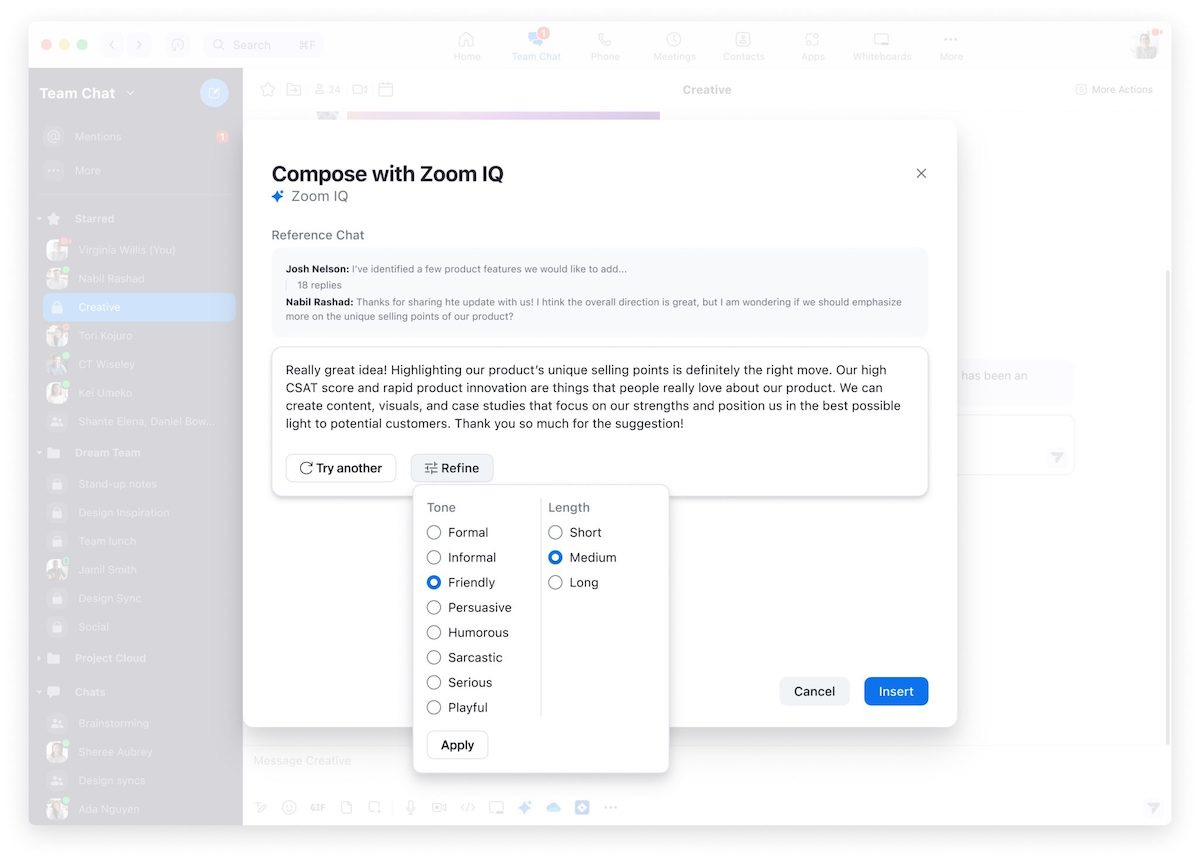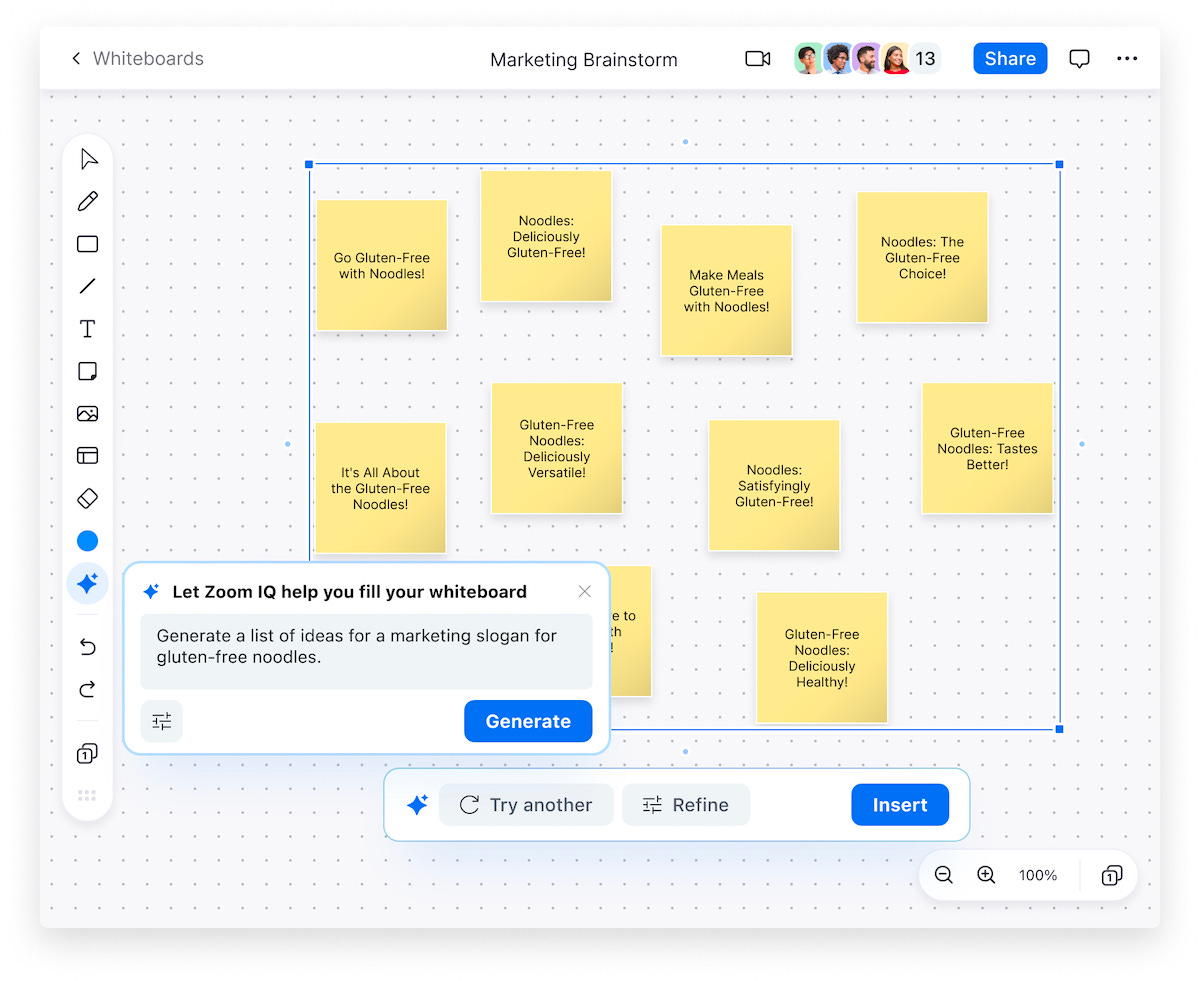Zoom Partners with OpenAI to Create a "Smart Companion"
Zoom IQ gets and upgrade based generative AI
Zoom announced yesterday that it has partnered with OpenAI to transform its Zoom IQ feature into a "smart companion." Zoom IQ offers features ranging from chapterizing recorded meetings and producing meeting notes to analyzing the quality of in-meeting questions by sales managers and cataloging competitive intelligence from sales calls.
Smita Hashem, chief product officer at Zoom, commented in a blog post about how generative AI technologies will provide a Zoom IQ upgrade:
We’re evolving the capabilities of Zoom IQ to become a smart companion that empowers collaboration and unlocks people’s potential by summarizing chat threads, organizing ideas, drafting content for chats, emails, and whiteboard sessions, creating meeting agendas, and more…
[The solution will] begin rolling out the following features to select customers by invitation in April: Zoom IQ chat compose, Zoom IQ email compose (initially available for Zoom IQ for Sales), and select Zoom IQ meeting summary features will be available more broadly.
Beyond Transcriptions and Summaries
AI-generated meeting transcriptions and summaries are not new. Zoom IQ already provided these features, and generative AI models may be able to improve the quality of these features. However, generative AI also presents an opportunity for Zoom to extend its value and integrate with business processes beyond the meeting.
The Zoom IQ companion example shows generative AI creating a list of marketing slogan ideas. Could you do that with ChatGPT and copy the ideas over to the Zoom Whiteboard? Sure. Is it convenient that these will autogenerate as sticky notes on your whiteboard in real time? Definitely.
It is also obvious that integrating a text-to-image AI model could benefit these types of collaboration meetings. And, if the meeting transcript and notes were automatically captured along with the whiteboard session, you could have them all in one place.
Beyond this, the workflow integrations are intriguing. For example, Salesforce’s EinsteinGPT can automatically update customer account records based on Slack conversations. I’m not sure people need Zoom to compose their sales emails or summarize Slack messages. However, automatically summarizing customer meetings and adding the information to Salesforce would save time and provide far more detail than what is typically added to an account record.
A Federated Approach
Zoom says it is implementing a federated architecture in support of generative AI solutions. It will enable users to access their own AI models, employ Zoom’s proprietary models, or use a third-party such as OpenAI or, eventually, DALL-E.
With this flexibility to incorporate multiple types of models, our goal is to provide the most value for our customers’ diverse needs. These models are also customizable, so they can be tuned to a given company’s vocabulary and scenarios for better performance.
The most likely scenario is that nearly all of the adoption will use Zoom’s base models because those will already be baked into the service features. However, it is smart of Zoom to leave the option open for users to customize implementations. The approach may also enable customers to deploy features that Zoom does not offer, but it is not clear many would go to this trouble for their video conferencing app.
A use case that may benefit from a custom generative AI model is customer service. If a company uses Zoom for customer support or product training, integrating a custom AI model for agent assistance that monitors the conversation could be beneficial.
A Copilot for Every Application
Zoom offers one more example of a rising trend. Every application will soon have a smart assistant or copilot that you interact with via natural language conversations. Why should you have to know how to access every feature in a software application’s UI or scan through a list of FAQs to answer a question?
Assistant solutions based on natural language understanding (NLU) already existed in a handful of applications, but the quality varied greatly, and the feature scope was limited. LLM-based solutions have proven far more versatile and easier to implement. What was once a differentiator will soon become a standard feature.
The added benefit for software developers goes beyond just improving the user experience. Generative AI enables new features that can help expand the value provided and increase the stickiness of the application. Plus, there is widespread interest in generative AI features. The result is a perfect storm driving application developer adoption.





